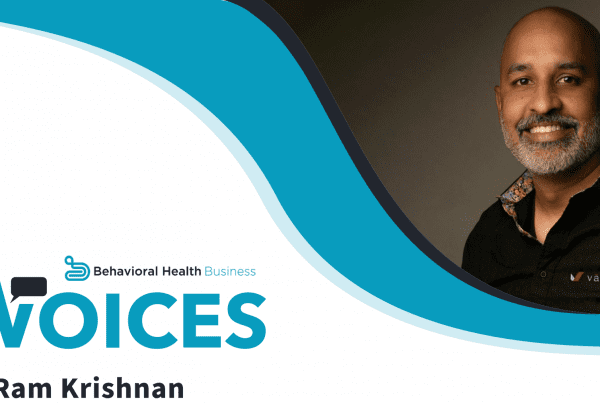David Lischner, MD, is the President, Chief Medical Officer, and Co-Founder of Valant. He’s also a practicing psychiatrist and Medical Director at Evidence-Based Treatment Centers of Seattle. Dr. Lischner is passionate about scaling high-quality health care making it available to all who need it. That’s why he started Valant, and why he decided to create an entirely new EHR from the ground up.
We sat down with Dr. Lischner to discuss the past and future of Valant, where behavioral health is headed, and how technology intersects with his predictions. From social determinants and genomics to big data approaches and value-based metrics, we learned a lot from Dr. Lischner’s experience and perspective. Let’s get started!
Inspiration for Innovation
VALANT: When did you decide to start Valant?
DAVID LISCHNER: I really liked the experience of taking something and building it, which is what I did with my group practice, so I had the entrepreneurial bug. The real motivation behind the group practice was to make evidence-based practice (and it’s called the Evidence-Based Treatment Centers of Seattle) available to people with behavioral health problems.
I was struck by the gap between treatment as usual and really high-quality care, which was in short supply. l wanted to enable high-quality care for more people, and I thought using technology as leverage could lead to scale. I saw Valant as a means of helping practices reduce their administrative burden while also helping to scale quality in behavioral health care. It was in 2004 that I had the specific idea about starting a technology company and then spent that year talking my brother into doing it with me. We cofounded it together in 2005.
Driving Forces in Behavioral Health
VALANT: What are the most influential trends in health care and specifically in behavioral health, from your perspective?
DL: I think the big trend in health care is the shift from fee-for-service to value-based care. That is driving a lot of other trends that might have happened otherwise but are being accelerated by the shift to value. Organizations are merging or growing independently for two reasons: economies of scale and the need for more capacity across multiple dimensions of health care, including the social determinants of health care and integrated care.
Integrated care is a trend that’s worth calling out on its own, independent of consolidation; that as risk is pushed down to the provider, there is a need for integration of services to improve outcomes, but also to reduce costs.
In health care in general, the drive to value has created a greater appreciation for the importance of behavioral health and social determinants of health, which go hand in hand as drivers of health care value, both on the outcome side but also the cost side. If you look at Medicaid, five percent of the patients are responsible for 50 percent of the costs. Those are patients with comorbid chronic conditions and about 80 percent of them have behavioral health problems. That’s the kind of statistic, when you shift to value, that makes it crystal clear that you have to focus on behavioral health.
VALANT: What is the significance of social determinants and care and what variables can have positive impacts?
DL: When you talk about social determinants, you could end up in the world of policy when you think about poverty and the causes of poverty. But even within a health care framework, the overlap between behavioral health and health behaviors is really important. There are health care providers, especially in the behavioral health world of community mental health centers, that are really good at helping people overcome their barriers. These providers figure out the hidden strengths of a consumer and help them make it to an appointment, get food stamps so they’re better nourished, or get the case management services they need to remember to take their medication.
While some social determinants of health are beyond the purview of the health care system, some we can impact, but it requires bringing together data from different parts of our health system. I see that as a trend that’s already happening. We’re in the first inning of the implementation, but those who are paying for health care are starting to get its value.
Behavioral Health and Technology
VALANT: How would you summarize the future of behavioral health care?
DL: You have to start with health care broadly. Precision medicine and value-based care are two big trends that may seem like they’re taking us in different directions, but at the intersection of these two is where we’ll see big changes in clinical service delivery over the next five to ten years. People think of precision medicine as genomics-based medicine: if I understand your genome, I can provide a solution that is personalized based on your DNA. But you can also think of it more broadly as the application of big data about people, consumers, to solve for their specific health problems.
There’s passive data collected on phones; demographic data, plus clinical data and patient-reported outcomes data that is captured in behavioral health care. These types of data along with genomics data could be combined with new technologies, like machine learning or artificial intelligence, to make better decisions at the point of care and at a population level to improve value over time. Using big data approaches and value-based metrics to improve value will happen across all health care. The big data precision-medicine approach and the value-based approach are different vectors, but I think the synthesis is going to be transformative.
Along with all of this is care management, care coordination, and collaborative care becoming critical skills within a provider organization as they assume more risk. I think because of all of these things, behavioral healthcare is starting to move to the center of the healthcare enterprise. Behavioral healthcare organizations are critical to influencing value and have the core skills required when health behaviors become central to the healthcare enterprise.
VALANT: What are the hurdles and enablers to getting to that point?
DL: Health care moves more slowly than other industries and so the obvious potential barriers are at the policy level. That uncertainty by itself could slow down innovation, or willingness to invest in innovation. At this stage, there’s such an appetite for change, and the push towards value is pretty universal. I think it’s the uncertainty of the regulatory environment that might be the biggest barrier.
The other hurdle would be technology, but we’re looking at it from an optimistic perspective. The future requires a new infrastructure for service delivery as well as continued investment in technologies like patient engagement and population health management. One big barrier has been that the electronic health records are old, and that has to be overcome, but that’s why Valant exists; to help solve that.
VALANT: How do you see technology affecting how providers do their jobs in the future?
DL: Meaningful use got us to universal adoption of health care technology faster than we would have otherwise, and there’s acceptance of the need for health care technology universally. But it’s had a lot of unintended consequences. One is a hardening of a technology infrastructure that is old, while in industries like consumer products there’s been a complete transformation of technology. Health care missed out on that because it was focused on building features for meaningful use rather than building a new infrastructure.
That’s led to problems with performance, access to data, change management, and user experience, which are all driving up total cost of ownership for health care organizations. It’s led to deep dissatisfaction for clinicians and disillusionment about the promise of technology. In the future, the relationship between the clinician and technology has to be fundamentally transformed. We have to close the gap between our experience at work, which is frustrating and reduces our job satisfaction, and at home where technology actually makes us feel better, astounds us, and excites us.
We’re going to transform the user experience for the clinician and the patient where more and more data will be captured passively, then interpreted through tools like artificial intelligence to support decision making at the point of care or population scale.
In a recent survey by Open Minds data-management and reporting was the largest barrier to implementing pay-for-performance programs. So there’s clearly a role for better technology in getting value-based initiatives off the ground. That’s the biggest understatement of this interview, but I might be biased.
What’s next for Valant
VALANT: Why did Valant decide to build a new EHR from the ground up instead of leveraging its existing EHR?
DL: This was not an easy decision. Building an EHR from scratch is a massive undertaking. We seriously contemplated extending our legacy technology. We ultimately decided to start from scratch because it was the right thing to do. A lot has happened since our last major rewrite in 2009. Other industries have been transformed, and we believe that the problems in today’s behavioral healthcare market aren’t being met by the current technology stack. We’re absolutely convinced that they’re not going to meet the needs of the future as health care moves in the direction of value and other trends that we’ve talked about tied to that.
The more we looked at it and thought about it, the more obvious it became that we had to start over. In behavioral health care specifically, there’s a need to solve for the current gaps, which include state and Medicaid reporting, but also for integrated care and value-based contracting in the future. We will need technology that can be a partner in producing better outcomes. You achieve better outcomes through best practice workflows that continuously improve.
When you cloud architect your software and take a modern approach to the data, it arms the provider with data to help them capture value in contracting with health plans. This makes for a win-win-win, as the players have clarity about what works, what doesn’t. High-performance organizations can be appropriately remunerated for quality and patient health improves. With cloud-architected technology, the EHR becomes the lever so the virtuous cycle scales exponentially.
We have two industries that are at an inflection point: software technology, where cloud architectures are transforming how we create software, and in health care as we move to a value-based care model. While there are potential hiccups and barriers, we think we’re on the cusp of an acceleration in both industries. Technology that’s cloud architected and designed to support value-based care is going to be a lever that helps in this transformation.
VALANT: What changes can we expect from Valant in the next couple years?
DL: Right now we are in full execution mode. We’ve had to think long and hard about making this investment in these technologies. We’re far into the project now and we’ve been at it for three years and we’re approaching product release and general availability in the coming months. We’ve been focusing on making sure we get that right, and I couldn’t be more excited about the progress we’ve made and the potential for transformation that this product has.
We have close to 40 customers that we are implementing with that will go live. We have an Enterprise product that meets the need, not just of the Enterprise behavioral health market but really all of behavioral health. We have an infrastructure that meets the current needs of all those customers, including state reporting, but also the emerging needs for integration with other entities, such as collaborating physical health providers, hospitals, and clinical data repositories. We’re doing monthly releases, which I would expect to continue into the foreseeable future as we continue to get feedback from our customers on what works and what they need.
It’s our responsibility to look beyond that as well and as risk gets pushed to providers, they’ll need more tools for care management, collaborative care, and easier interoperability. We’ve built an infrastructure that makes it easier for us to integrate with partners or health care entities. I’ll make the prediction that our customers will want more and more patient engagement capabilities in the coming months and years. We’ll mature our API infrastructure so it’s even easier for partners innovating in those areas.
We certainly hope you enjoyed our interview with David Lischner, the President and CMO of Valant. For more insight from our industry’s celebrated experts, please check out our other Behavioral Health Influencer interviews.




